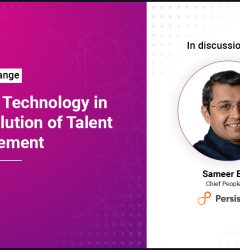17 Sep

For most jobs, there are a few job competencies that are common and expected by companies, such as:
- Teamwork
- Responsibility
- Commercial Awareness
- Decision Making
- Communication
- Leadership
- Integrity
- Result Orientation
- Problem Solving
- Organizational Competency
Learn how PossibleWorks can help you
Competency – A definition
A competency is generally defined as a combination of skills, knowledge, attributes, and behaviors that enable an individual to perform a task or activity successfully on a given job.
Organizations define competency as measurable on-the-job behaviors that an organization desires to see in its workforce or employees. They are critical behavioral traits and skills of its employees that allow an organization to achieve its business goals.
Companies list relevant competencies while defining job requirement and recruiting, and for the retention and development of its staff. Depending on the job description, type, department, industry, and seniority required, an organization may be looking for a varied set of competencies.
For example, when looking to hire a Digital Marketing Manager, an organization will include knowledge of Digital Marketing, Analytical thinking, Reporting skills, etc. in the job description.
Difference between Job Description and Job Competencies
Job description can be defined as a broad, general and written statement that defines the nature, scope and responsibilities of a job role or title. The job description or JD is based on the findings of a job analysis. It lists the tasks, roles, and responsibilities that a selected candidate will perform on that job.
Job competency on the other hand is a part of job descriptions nowadays. Based on the role and job title, hiring managers list a number of key characteristics, skills, and behavioral aspects that they are seeking in a candidate. These combined are known as job competencies. In short, we can define job competency is an essential element that includes the knowledge, skill, or attitude required to succeed in a job role. Let us learn the difference with an example.
Job Title: Content Writer Job Location: New Delhi
Job Responsibilities:
- Conducting keyword research and using SEO best practices to increase traffic to the company website
- Conducting in-depth research on industry-related topics to develop original content to avoid a penalty for plagiarism levied by major search engines
- Developing unique content for blogs, articles, product descriptions, social media, and the company’s website
- Creating compelling, eye-catching, and innovative headlines and body copy that will capture the attention of the target audience
- Assisting the marketing team in developing content for advertising campaigns
- Proofreading content for errors and inconsistencies
- Editing and polishing existing content to improve readability
- Identifying customers’ needs and recommending new content and their content structure to address gaps in the company’s current website content
Key Skills Required:
- SEO Copywriting
- Creative Writing
- Proofreading
- Presentation Skills
- Good Communication
- Team Coordination
In the above job posted for a Content Writer, they have mentioned Job Title, Job Location, Job Responsibilities, and some Key Skills. The overall written statement for the job advertised can be known as Job Description. But the key skills mentioned are part of Job Competencies that the company is looking for in the candidate to perform the job successfully.
[hfe_template id=’4291′]
Types of Competencies
Each individual has his or her own set of different skills, traits, behaviors and attributes that make them suitable for a job role. Competencies enable the staff of an organization to understand the expected behavior and level of performance in order to achieve organizational goals. They provide individuals with an indication of the behaviors that will be appreciated, recognized and rewarded within the organization.
Since there are a vast number of competencies that an employee can cultivate, they are divided into three major categories: Behavioral, Functional and Leadership.
Behavioral Competencies
As the name suggests, behavioral competencies are related to the expected soft skills and behavioral traits of an employee. Such competencies are required irrespective of the job role, type or position of an employee in an organization. These are basic human skills that help a person survive in the competitive and collaborative organizational environment.
Also known as Core Competencies or General Competencies, these are crucial to an employee’s performance within the organization. Creativity, compassion, originality, self-awareness, self-motivation, ambition, career aspirations, and time management are some basic competencies that form the backbone of an employee’s personality. Just as no person can stand without a backbone, no employee can survive without such skeleton competencies.
Examples of Core or Behavioral Competencies:
Teamwork, problem-solving, customer service, communication, result-orientation, decision-making, self-motivation, integrity.
Functional Competencies
Unlike behavioral core competencies, functional competencies are specific to an industry, department or a job type. Due to ever-changing market demands, businesses face various challenges to survive and grow. Each business requires some specific competencies that will pave way for its success.
Functional or technical competencies are integral to the success of any business as they focus on subject-knowledge, technical know-how, and other relevant factors needed for the smooth functioning of a business. Its employees are expected to have a relevant set of skills that relate to their job type, job description, and position in the organizational hierarchy.
Examples of Functional or Technical Competencies:
Sales, marketing, accounting, research, computer knowledge, training & development, business planning.
[hfe_template id=’4292′]
Leadership Competencies
Leadership in itself is a vast subject and a necessary skill especially for team handling and senior positions in an organization. There is a long list of competencies that a leader should possess to be efficient at his or her job. Many behavioral or personality traits can be required for a leadership role in an organization.
However, there are some basic competencies that are essential for an employee to hold a leading position. These can be based on five important things: conceptual skills, integrity, impact & influence, communication skills, and business acumen. While the first four are basic traits that make an employee a good leader, business acumen is exceptionally important. A leader who is good at managing his or her subordinates, is great at communication but lacks any knowledge of the business or at least a related industry won’t succeed.
Examples of Leadership Competencies:
Building relationships, inspirational leadership, strategic planning, future-orientation, quick decision-making, accountability, resource management.
Top 10 Key Competencies that you should know/Top 10 Key Competencies that every employee should possess

-
Teamwork
“Teamwork is the ability to work together toward a common vision. The ability to direct individual accomplishments toward organizational objectives. It is the fuel that allows common people to attain uncommon results.” – Andrew Carnegie
Business is all about coming together to achieve organizational goals in order to succeed and grow. Therefore, every employee should have the ability to work in a team and contribute towards individual and business goals.
As an employee, you are assigned certain tasks that are part of a larger picture. When the work of the whole team or organization is combined, it comes together to showcase the bigger picture. Your ability to work in a team portrays your willingness to work with others towards a shared goal and share the credit with all contributors.
“Great things in business are never done by one person. They’re done by a team of people.”– Steve Jobs
-
Responsibility
Macmillan dictionary defines ‘responsibility’ as “the state or job of being in charge of someone or something and of making sure that what they do or what happens to them is right or satisfactory”.
Leaders or managers are expected to take responsibility for their own actions and that of their team. However, each employee should be responsible and hold accountability for their own actions and the tasks assigned.
Each job requires a certain level of responsibility for any task. Candidates that have this competency take ownership of their own work and are a preferred choice for most jobs. Senior-level or team managing positions list responsibility as a necessary competency in the job description.
“Responsibility is not given, it is chosen. If a work is given to you then it is your core character that you take it as a responsibility or just a job. And your choice will be clearly visible in the end. Either it will be a result or an excuse.”- Simple Vedant
-
Commercial Awareness
Commercial awareness can be simply defined as “the ability to understand what makes a business or organization successful” and “staying up-to-date on daily happenings and developments in the business and commercial world”.
Considered a functional and leadership competency, commercial awareness is an important quality in an employee. Employees who understand the business, the market and the industry as a whole, will have a fair idea what needs to be done to succeed. This is most crucial for managers and senior management personnel.
However, each employee in the organization is required to understand how the business works. This helps employees have a better idea of their role in the business. Employees are the people who take your business, product or services to the consumers. Only by having an understanding of the business, product or service, can the company build a brand.
-
Decision Making
“You cannot make progress without making decisions.”– Jim Rohn
Decision making is the process of gathering information, examining your possibilities, comparing them, and choosing a course of action. Making decisions is a complex process and the outcome(s) can impact the entire organization.
In this competitive business world, employees that have the competency to make quick and informed decisions are valued. Recruiters often ask situational questions to analyze the decision-making ability of employees especially for mid and senior-level positions.
“Truly successful decision-making relies on a balance between deliberate and instinctive thinking.”– Malcolm Gladwell
-
Communication
“Communication is vital when it comes to excelling in the workplace and in your personal relationships.”– Chelsea Krost
The ability to communicate with your teammates, managers, and customers is an essential requirement for any job in an organization. Employers list communication on most job postings as a required skill. What employers are looking for in a candidate is the ability to convey information in a professional, precise and easy-to-understand manner for others.
Communication in an organization can involve conversing with your colleagues, managers, clients, and other humans in your sphere. It also helps you negotiate contracts successfully and close deals in faster turnaround time. An employee who has effective communication skills is an asset to any organization.
“Communication- the human interaction- is the key to personal and career success.”– Paul J. Meyer
-
Leadership
“A leader is one who knows the way, goes the way and shows the way.”– John C. Maxwell
Leadership competency is an essential element of a team leader, mid-level or senior-level position in an organization. The most essential part of a leader’s job is to understand & convey goals, delegate tasks, set deadlines, and motivate employees.
Employees who wish to progress into managerial roles are required to have leadership competency. The leadership ability of an employee is judged based on their interaction with other employees, their subordinates, how they build relationships with others, and how they handle conflict.
“The true test of leadership is how well you work in a crisis.” – Brian Tracy
-
Integrity & Ethics
“If you are looking for people to hire, look for three qualities: integrity, intelligence and energy. And if they don’t have the first, the other two will kill you.” – Warren Buffet
Integrity & ethics are what define a person and employers look for candidates that are honest, ethical, and have integrity. Employees who are trustworthy and work ethically are known to build better relationships with others in the organization. This competency enhances the team’s efforts and brings value to organizational processes.
Employees who are able to demonstrate their trustworthiness show good moral judgment. By being honest and open, you can showcase your ethics, morals, integrity and build trust with subordinates, managers and even customers.
“A man without ethics is a wild beast loosed upon this world.”– Albert Camus
-
Result Orientation
People who are result-oriented have a clear sense of goal and they strive to achieve them. Organizations need employees that will work and pursue a project to fruition and inspire others to do the same.
An employee who has result-oriented competencies will know how to set ambitious goals that are realistic and achievable. Work that has no result to show is not recognized by most organizations. To succeed, setting goals, defining steps and bringing results is a part of an employee’s job.
Candidates can demonstrate their capability to achieve results by relaying examples from their previous experiences. Describing your goals, proactive measures and the results achieved show recruiters that you can deliver results.
“All coaches have one thing in common. It’s that they are ruthlessly results-oriented.”– Fast Company magazine
-
Problem Solving
“Learn to use your brainpower. Critical thinking is the key to creative problem-solving in business.”– Richard Branson
Working in an organization requires collaboration with various teams, departments, products, customers, etc. on a daily basis. As an employee, there will be different occasions where you will have to make a quick decision to resolve an issue or a problem. Your ability to solve the issue with calm composure, critical thinking and maximum information will be your problem-solving competency.
Organizations are looking for candidates that can make timely decisions but more importantly can solve a problem with their presence of mind. For some job roles like a business analyst, problem-solving will be a key competency that is mentioned in the job description.
“Successful problem-solving requires finding the right solution to the right problem. We fail more often because we solve the wrong problem than because we get the wrong solution to the right problem.”– Russell & Ackoff
-
Organizational Competency
Organization skills do not just refer to keeping your desk clutter-free. An employee who has the organizational skill can prioritize workload, manage time, optimally utilize resources and achieve greater results.
Employers are looking for employees who can effectively manage their time, workload, responsibilities and can concentrate on the end result. Organizational competency is generally divided and mentioned as time-management, resource optimization, result-achiever, etc. in job descriptions.
“The five essential entrepreneurial skills for success: concentration, discrimination, organization, innovation, and communication.”– Harold S. Green
Conclusion
The above-mentioned competencies play a crucial role in developing the personality, behavior, and skills of an employee. Each competency that a candidate or employee possesses results in the overall development of the employee. Companies undertake training and development sessions, organize upskill workshops, and guest lectures for employee development.
Employees that have their competencies aligned with the organization contribute more towards its growth.
[hfe_template id=’4296′]



